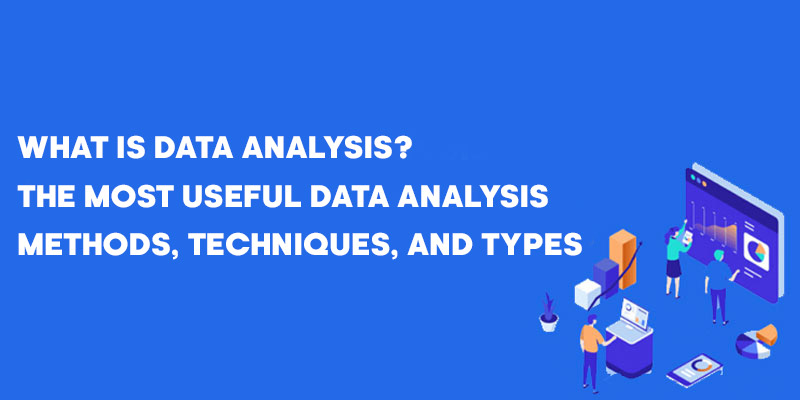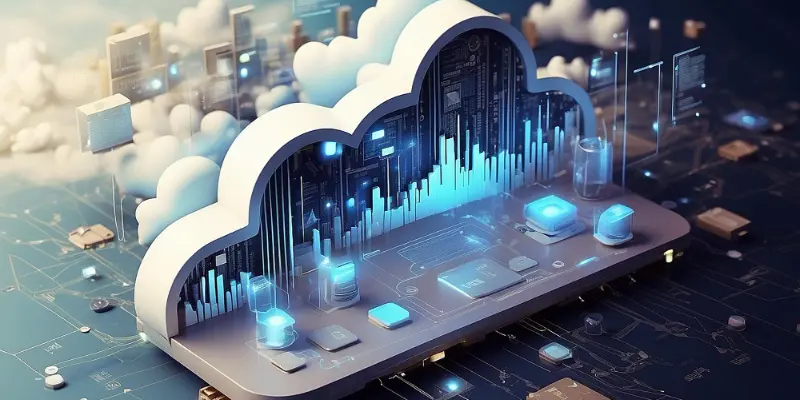Analyzing raw data to retrieve meaningful insight is known as data analysis. These drawn-out data are used to evaluate the best course of action. To have a precise understanding of Data analysis: data analytics methods are the process of gathering, clearing, converting and modelling data to find valuable data for making a business-related decision.
If you want to become a data scientist, you must have a profound understanding of data analysis; you can join Data Science Course in Chennai, which will help you acquire the knowledge of data analytics methods, statistical data analysis and data analysis techniques.
Statistical data analysis retrieves valuable data for decision-making for further business development. For example: if you tend to take any decision in your day-to-day life as a first step, you will start analyzing your weakness, the thing that happened, the time you spend on particular work, etc. So, by evaluating the past, and present, you will decide on your future career. So, based on the Analysis, you will be able to derive a few things you can do in the future.
Identically, data analysis is useful for the business to derive valuable data. In this blog, we shall discuss data analytics methods, data analysis techniques, statistical tools for data analysis and the importance of data analysis. Moreover, you will also understand how to turn unnecessary data into business intelligence.
What are data analytics methods? And the importance of data analysis
As we already covered, data analysis is discovering valuable information. Analytical and statistical tools help in performing this Analysis, which is done by looking over, cleaning, converting, and modelling the data.
Enroll in a Data Science Course in Chennai and understand Machine Learning Algorithms, Exploring Supervised Learning Algorithms and Un-Supervised Learning Algorithms, work with External Data, Data Visualization with R, etc.
What is the importance of data analysis
Effective data analysis aids in business decision-making for organizations. Businesses now continuously gather data through various channels, including surveys, online tracking, online marketing analytics, collected subscription and registration data (think newsletters), and social media monitoring. These data will manifest in a variety of structures.
Big data
In the early 2000s, the idea of big data- amounts of fast or complex data that are challenging or impossible to process using conventional methods—began to gain traction.
According to industry analyst Doug Laney, the three Vs—volume, velocity, and variety—have since become the standard definition of big data.
- Volume
- Velocity
- Variety.
Metadata
Metadata is used for gaining information about related data, for example, IMAGE. When you right-click on the file in the folder and select GET INFO, it will show you the complete details, such as file size, date of storage, etc.
Real-time data
This information is made available as soon as it is gathered. A stock market ticket, which offers real-time details on the most active stocks.
Machine data
This type of data is created entirely by machines without human instruction. An example of machine data is a cloud that saves all our logs and files automatically without the help of human interaction. This is also applicable to smartphones.
Quantitative and qualitative data
Quantitative data is also denoted as structured data. Structured data is a traditional database with rows and columns.
Quantitative data is also known as unstructured data, which does not fit into rows and columns. It includes text, images, videos, etc.
If you want to get into the demanding carer path, you can enrol in Data Science Course in Pondicherry and learn the core concepts of data science like data analysis, methodology and many other core concepts.
Data Analysis Tools
The top 10 Data Analysis Tools
- Microsoft Excel
- Python
- R
- Jupyter Notebook
- Apache Spark
- SAS
- Microsoft Power BI
- Tableau
- KNIME
- MATLAB
If you intend to learn any programming language, you can join Python Training in Chennai, which will impart you with the core concepts of python, Dictionaries And Sets, Input And Output In Python, Functions, Exceptions Handling, etc.
Data analysis techniques
Now that we are familiar with some of the various data types, let’s concentrate on the current subject: multiple data analysis techniques are:
Types of Data Analysis: data analysis techniques and Methods
Based on business and technology, there are numerous data analysis techniques. The principal Data Analysis techniques, however, are:
- Text Analysis
- Statistical Analysis
- Diagnostic Analysis
- Predictive Analysis
- Prescriptive Analysis
Text Analysis
Data mining is another name for text analysis. Finding patterns in large data sets using databases or data mining tools is one of the data analytics methods. In the past, it converted unprocessed data into business information. There are tools for business intelligence available on the market that are used to make strategic business decisions. Overall, it provides a way of extracting, evaluating, and deducing patterns from data before interpreting the data.
Statistical data analysis
Statistical data analysis indicates “what has happened?”. It means it demonstrates the past data in the dashboards. Statistical data analysis includes gathering, analyzing, presenting, interpreting, and modelling data.
The statistical data analysis can be categorized into two types
- Descriptive Analysis
- Inferential Analysis
Descriptive Analysis
It is one of the data analytics methods in which a set of data has been analyzed completely or a sample of summarized numerical data. For continuous data, it displays mean and deviation; for categorical data, percentage and frequency are displayed.
Inferential Analysis
Analyses of a sample of the full set of data. Using different samples in this type of Analysis allows you to draw various conclusions from the same data set.
Data Science Courses in Bangalore have meticulously designed the course for Bangalore-based students who intend to begin their careers as data scientists.
Diagnostic Analysis
Diagnostic Analysis answers the question, “Why did it happen?” by identifying the root cause using the knowledge gained from statistical Analysis. Finding data behaviour patterns can be done with the help of this Analysis. If a new issue arises in your business process, you can check this Analysis to see if any previous issues have similar patterns. Additionally, it might be able to use similar remedies for brand-new issues.
Predictive Analysis
Predictive Analysis uses historical data to show “what is likely to happen.” The simplest data analysis example is that if I saved up last year and bought two dresses, and this year my salary doubles, I can buy four dresses.
Of course, it’s more complicated because you also need to consider other factors, such as the possibility that clothing prices will rise this year, whether you’d instead buy a new bike or a house, or whether you’d prefer to buy dresses.
Therefore, based on recent or past data, this Analysis makes predictions about potential outcomes. A forecast is merely an estimation. Its accuracy depends on how much information you have in detail and how deeply you research it.
Prescriptive Analysis
The prescriptive Analysis combines the knowledge from all prior studies to decide the best course of action for a current issue or decision. Most data-driven businesses use prescriptive Analysis because improving data performance requires more than just descriptive and predictive Analysis.
They make decisions based on the data analysis and the problems and situations of the moment.
If you are a Coimbatore-based student interested in learning data science, you can join Data Science Course in Coimbatore and learn basic to advanced concepts and begin your career as a data scientist.
Data Analysis Process
Data analysis is collecting data using a suitable application or tool that allows you to explore the data and find a pattern. You can conclude or make decisions based on that information and data.
The following phases make up data analysis:
- Data Requirement Gathering
- Data Collection
- Data Cleaning
- Data Analysis
- Data Interpretation
- Data Visualization
Data Requirement Gathering
You must first ask yourself why you need to conduct this data analysis. You must figure out why or what you want to accomplish when you analyze data. You must choose the type of data analysis you want to perform!
Moreover, you must decide what to analyze and how to measure it during this phase. You must also comprehend why you are conducting the investigation and what techniques you must employ to conduct this Analysis.
Data Collection
After gathering the needs, you can measure the right things and interpret your results. It is time to gather your data based on needs. Remember to organize or filter your data before using it for Analysis. As you collect data from various sources, you should keep a record of the data collected as the source.
Data Cleaning
Whatever information gathered might not be pertinent to your Analysis’s goal or valuable, so it has to be clean. The collected data could have duplicate records, blank spaces, or mistakes. The information must be accurate and clean. Since data cleaning will make your analysis output more likely to match your expectations, this phase can get completed before Analysis.
Data Analysis
After being gathered, processed, and cleaned, the data will get prepared for Analysis. By manipulating the data, you might learn that you already have all the necessary information or still need more. During this phase, you can use data analysis tools and software to comprehend, interpret, and conclude based on the requirements.
If you want to become a python developer or programmer, you can join Python Training in Bangalore, which will help you have a profound understanding of the Django installation Settings module, Models Layer, View Layer, Template Layer, etc.
Data Interpretation
It’s time to interpret your findings after you’ve examined your data. You can use plain language, a table, or a chart to convey your data analysis. Then choose the most appropriate course of action based on the outcomes of your data analysis process.
Data Visualization
In your daily life, data visualization can be seen frequently in charts and graphs. In other words, information is presented graphically to make it simpler for the brain to comprehend and process. Data visualization is frequently used for discovering undiscovered facts and trends. You can uncover relevant information by examining relationships and contrasting datasets.
Now that you have understood data analytics methods, statistical data analysis, data analysis techniques, statistical tools for data analysis and the importance of data analysis. So, if you want to become a data scientist, you can join Data Science Course in Bangalore, which will help you have an in-depth understanding of data analytics methods, Overview of the implementation of Artificial Intelligence, Machine Learning and Deep Learning.



